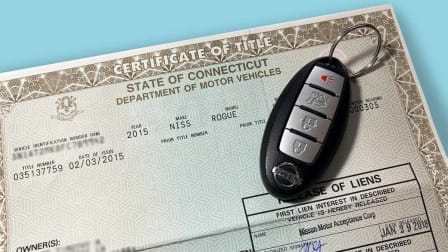Building a Better World, Together

Join with us to make a safer, fairer, healthier marketplace
Preventing Tragic Furniture Tip-Overs
CR fought long and hard alongside parent advocates to reduce the risk of furniture tip-overs, which have caused hundreds of deaths and thousands of injuries of children over the past two decades. Finally, in 2022, the Stop Tip-overs of Unstable, Risky Dressers on Youth (or STURDY) Act was passed.
Now, more than a year after the law went into effect, a CR investigation has found that the new safety standards are clearly working—but there’s still reason for concern.
First the good news: We put 12 popular dresser models through our rigorous tip-over tests, which are based on the requirements of the STURDY Act. All those manufactured after the rule went into effect on Sept. 1, 2023, passed.
But there’s still work to be done. The rule applies only to dressers manufactured after that date and allows companies to continue selling older ones. Our investigation found that dressers made before the law went into effect are still being sold on major retail platforms like Amazon and Walmart, potentially putting consumers at risk. Seven of the 19 dressers we bought for our tests in early 2024 were manufactured before the new standards went into effect. (We returned them untested.)
Most important: We found that it’s not easy for consumers to learn when a dresser was made. This info isn’t readily available on the products or online, so consumers must contact manufacturers directly. CR asks retailers to commit to a public timeline for ending sales of older, non-compliant designs. And we’re urging manufacturers to clarify whether their dressers meet the new standards.
100% of dressers produced after Sept. 1, 2023, and evaluated by CR passed our tip-over tests.
Action Update
Consumers rely heavily on online reviews to help them make purchasing decisions. Unfortunately—as CR has often noted—online marketplaces are rife with fake reviews that are paid for or planted by those who stand to benefit from sales. And fake reviews generated by artificial intelligence are making the problem far worse. In August, the Federal Trade Commission passed a CR-endorsed rule prohibiting fake reviews and testimonials, the censoring of honest negative reviews, and paying third parties for positive reviews. The new rule took effect in October.
Making Autos Safer
What’s at stake: Most everyone is a pedestrian at some point—whether we’re crossing a busy street or walking along a rural road—and we all want to get around safely. But between 2009 and 2022, the annual number of pedestrian deaths shot up 83 percent, to 7,522. And that doesn’t include "frontovers," where a driver hits someone—usually a child—in their front blind spot while maneuvering in a driveway or parking lot.
The reasons for this are complex. But research indicates that vehicle design is likely a contributing factor.
What CR is doing about it: CR has closely documented the trends of growing size, weight, and hood height of the biggest SUVs and trucks. And we’ve been pushing automakers to consider safer vehicle designs that would make pedestrians more visible and collisions less deadly when they do occur, and to make features like pedestrian detection and frontover-prevention technology standard on all models.
We’ve also urged policymakers to help—and in September, the National Highway Traffic Safety Administration proposed a rule requiring that new vehicles be designed to reduce pedestrian head injuries. It calls for, among other things, test procedures that would simulate pedestrian impacts, and requirements that would align with those already in place in Europe and Asia.
What you can do: Make sure your vehicle has good visibility and is equipped with automatic emergency braking with pedestrian detection. And join CR in calling for sensible safety upgrades to make crashes more survivable for pedestrians. Sign our petition.
Editor’s Note: This article also appeared in the January/February 2025 issue of Consumer Reports magazine.




















